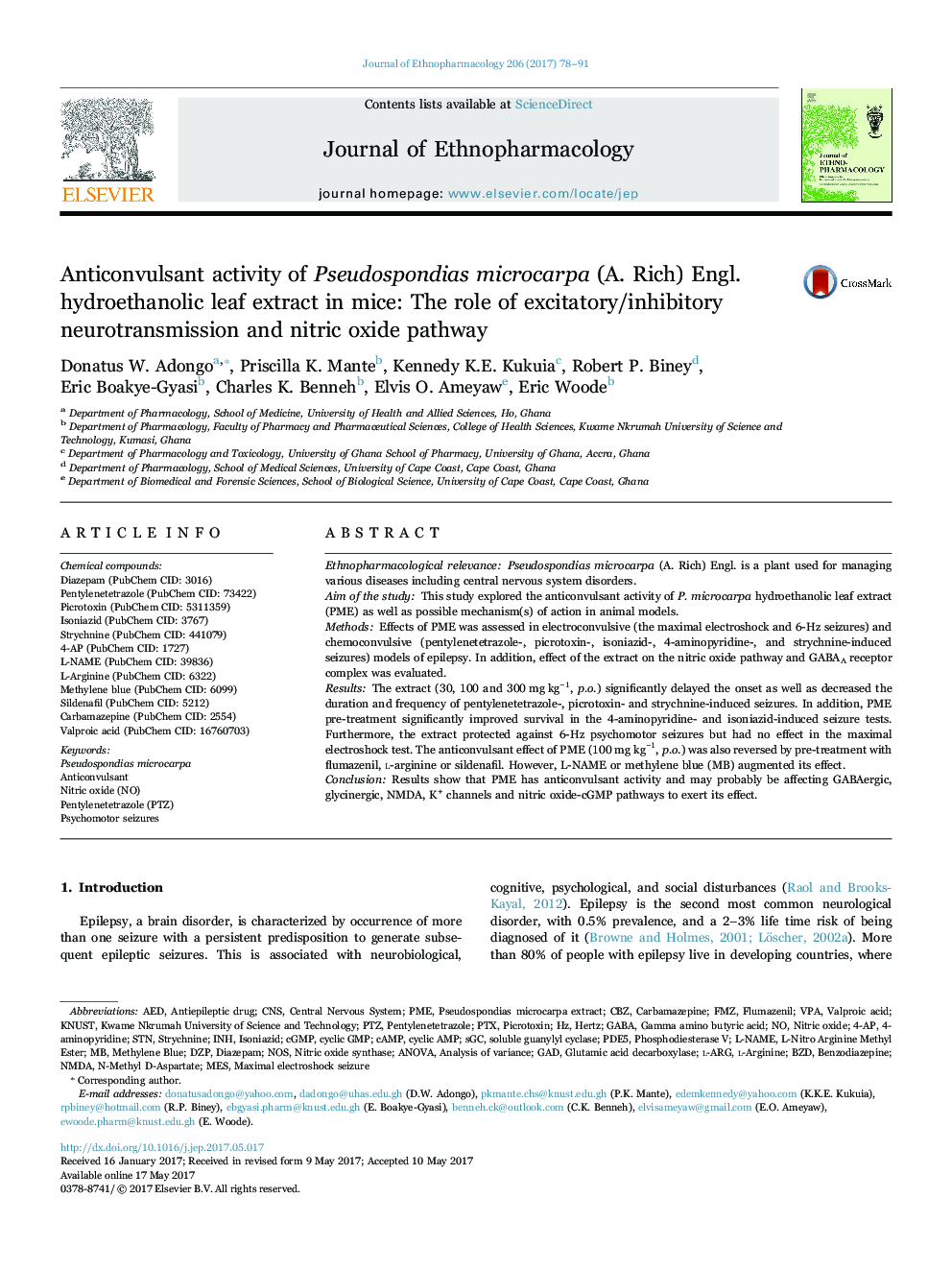| Article ID | Journal | Published Year | Pages | File Type |
|---|---|---|---|---|
| 5556198 | Journal of Ethnopharmacology | 2017 | 14 Pages |
Ethnopharmacological relevancePseudospondias microcarpa (A. Rich) Engl. is a plant used for managing various diseases including central nervous system disorders.Aim of the studyThis study explored the anticonvulsant activity of P. microcarpa hydroethanolic leaf extract (PME) as well as possible mechanism(s) of action in animal models.MethodsEffects of PME was assessed in electroconvulsive (the maximal electroshock and 6-Hz seizures) and chemoconvulsive (pentylenetetrazole-, picrotoxin-, isoniazid-, 4-aminopyridine-, and strychnine-induced seizures) models of epilepsy. In addition, effect of the extract on the nitric oxide pathway and GABAA receptor complex was evaluated.ResultsThe extract (30, 100 and 300 mg kgâ1, p.o.) significantly delayed the onset as well as decreased the duration and frequency of pentylenetetrazole-, picrotoxin- and strychnine-induced seizures. In addition, PME pre-treatment significantly improved survival in the 4-aminopyridine- and isoniazid-induced seizure tests. Furthermore, the extract protected against 6-Hz psychomotor seizures but had no effect in the maximal electroshock test. The anticonvulsant effect of PME (100 mg kgâ1, p.o.) was also reversed by pre-treatment with flumazenil, L-arginine or sildenafil. However, L-NAME or methylene blue (MB) augmented its effect.ConclusionResults show that PME has anticonvulsant activity and may probably be affecting GABAergic, glycinergic, NMDA, K+ channels and nitric oxide-cGMP pathways to exert its effect.
Graphical abstractDownload high-res image (131KB)Download full-size image
